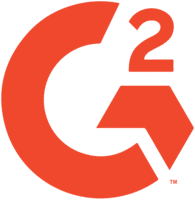As organizations strive to navigate an ever-evolving environment, the effective alignment of human capital with overarching goals has become a cornerstone of success. Strategic human resource planning goes beyond traditional HR functions, focusing on long-term strategies that ensure a company’s workforce is not just capable, but also adaptable and poised for growth. In this blog, we delve into the essential steps involved in strategic human resource planning, unraveling the intricacies that enable organizations to proactively address challenges and seize opportunities.
According to LinkedIn, 7 out of 10 employees wouldn’t work for a top company with a bad work environment.
Understanding strategic human resource planning
Strategic human resource planning stands as a pivotal linchpin in the realm of modern organizational management. It is the compass that guides an organization’s human capital endeavors towards its overarching objectives. At its core, strategic human resource planning revolves around the meticulous alignment of human resource strategies with the broader business strategy. This synergy ensures that a company’s workforce not only possesses the necessary skills but also operates with a shared sense of purpose.
Human resource planning, encompassing the strategic aspect, involves far-sighted thinking. It’s not merely about filling immediate vacancies, but rather about predicting and preparing for future talent demands. By recognizing the ever-changing nature of industries and business landscapes, organizations can anticipate skill gaps and proactively address them. This involves envisioning the ideal future workforce that would best serve the company’s goals and then devising strategies to build, acquire, or nurture such a workforce.
Moreover, this form of planning isn’t a monolithic endeavor; it’s a dynamic process that must adapt to shifting internal and external conditions. Economic trends, technological advancements, and shifts in market demand all influence how an organization approaches its human resource strategies. The adaptability of strategic human resource planning allows businesses to stay resilient, ensuring that their workforce remains agile and capable of tackling new challenges head-on.
In essence, understanding strategic human resource planning entails recognizing it as a proactive, flexible, and forward-looking discipline. It’s not confined to the HR department; rather, it should permeate the entire organizational structure. When executed effectively, this form of planning transcends the conventional boundaries of human resource management, emerging as a guiding force in shaping an organization’s journey towards sustained success.
Importance of strategic human resource planning in organizations
The significance of strategic human resource planning reverberates throughout the intricate tapestry of modern organizations. As businesses continue to navigate an ever-evolving landscape, the role of human resources has transcended its traditional boundaries to become a strategic partner in achieving overall objectives. This transition is imperative in an era where talent scarcity, technological advancements, and shifting market dynamics are the norm.
Strategic human resource planning brings several compelling benefits to the forefront. Firstly, it serves as a compass for talent acquisition and management. By aligning HR strategies with the company’s strategic goals, organizations ensure that they attract and retain individuals who possess not only the required skills but also a shared vision. This alignment minimizes the risk of skill gaps and fosters a culture of engagement and commitment.
Furthermore, the integration of strategic human resource planning enables organizations to respond proactively to change. In an environment where disruption is constant, having a well-defined plan ensures that the company can swiftly adapt its workforce to address emerging challenges. This agility is particularly crucial when it comes to industries heavily influenced by technological advancements, where the demand for new skill sets can surge unpredictably.
Additionally, strategic human resource planning is instrumental in fostering a culture of continuous learning and development. It aids in identifying skill gaps and formulating targeted training initiatives to bridge them. This not only enhances employee capabilities but also strengthens the organization’s overall competency and competitiveness.
In conclusion, the importance of strategic human resource planning is evident in its ability to elevate HR from a transactional role to a strategic enabler. By aligning talent strategies with overarching business objectives, fostering adaptability, and prioritizing skill development, organizations equip themselves to thrive in the complex and ever-changing landscape of today’s corporate world.
Key components of strategic human resource planning
The intricate orchestration of strategic human resource planning comprises several key components that collectively drive an organization towards its goals. These components are not isolated entities but rather interwoven aspects that work in harmony to create a holistic approach to workforce management and development.
At the core of this planning lies an in-depth analysis of the organization’s current workforce and its capabilities. Understanding the strengths, weaknesses, and potential growth areas of the existing team is paramount. This analysis provides the foundation upon which the rest of the planning process is built. By identifying gaps in skills and competencies, businesses can formulate targeted strategies to address these deficiencies.
Recruitment and retention strategies form another vital component. Given the competitive nature of today’s job market, attracting and retaining top talent has become an ardent challenge. Organizations need to devise approaches that not only appeal to potential employees but also foster a sense of loyalty among existing ones. These strategies encompass aspects such as employer branding, competitive compensation packages, and a supportive work environment.
Equally important is the development of a robust training and skill enhancement framework. As industries continue to evolve, the skills required to remain relevant are in a constant state of flux. Strategic human resource planning involves identifying these evolving skill sets and designing training programs that empower employees to acquire them. This not only benefits individual career growth but also enhances the organization’s overall competence.
In conclusion, the key components of strategic human resource planning – comprehensive workforce analysis, effective recruitment and retention strategies, and a proactive approach to training and skill enhancement – work in synergy to foster a resilient and adaptable workforce. This holistic approach ensures that an organization remains well-equipped to navigate the challenges of today’s business landscape while also preparing for the uncertainties of the future.
Steps involved in strategic human resource planning
Navigating the intricate landscape of strategic human resource planning involves a series of well-defined steps that collectively pave the way for a resilient and future-ready workforce. These steps, when executed cohesively, align the organization’s human capital with its overarching business objectives.
The first step entails a comprehensive assessment of the current business environment and the organization’s strategic goals. This lays the foundation for the subsequent planning stages by providing insights into the skills, competencies, and capacities required to achieve those goals. This holistic understanding serves as a reference point for all subsequent decisions.
Following this assessment, the identification of future workforce needs takes center stage. By forecasting the skills and roles that will be in demand, organizations can proactively address potential skill gaps. This proactive approach minimizes the risks associated with sudden talent shortages and positions the company to seize emerging opportunities with a capable workforce.
With a clear grasp of future needs, the strategic human resource planning process delves into developing targeted recruitment and retention strategies. These strategies encompass sourcing methods, employer branding initiatives, and techniques to engage and retain top talent. The goal is not only to attract skilled individuals but also to cultivate an environment where employees are motivated to stay and contribute to the organization’s growth.
Additionally, strategic human resource planning involves comprehensive training and development plans. This step focuses on equipping the existing workforce with the skills required to meet future demands. By offering continuous learning opportunities, organizations invest in their employees’ growth, enhancing both their individual capabilities and the collective competency of the company.
In essence, the steps involved in strategic human resource planning form a cohesive journey towards achieving a synchronized alignment of human capital with business aspirations. From understanding the present to envisioning the future, and from strategic recruitment to ongoing skill development, this process ensures that organizations are not only prepared for the challenges of today but also primed for the opportunities of tomorrow.
Analyzing current workforce and future needs
The critical step of analyzing the current workforce and forecasting future needs lies at the core of strategic human resource planning. This intricate process involves a comprehensive evaluation of the existing talent pool within the organization. By scrutinizing the skills, competencies, and roles of the current workforce, businesses gain invaluable insights into their strengths and limitations. This analysis forms the cornerstone upon which future workforce strategies are built.
Simultaneously, the process extends beyond the present, delving into the realm of forecasting. Anticipating the future skills, roles, and capacities required to meet the evolving demands of the business landscape is an art in itself. By studying market trends, technological advancements, and industry shifts, organizations can paint a clear picture of what the future may hold. This forward-looking approach empowers companies to identify potential gaps in their workforce and take preemptive measures to address them.
The connection between analyzing the current workforce and predicting future needs is where the true essence of strategic human resource planning thrives. It bridges the gap between the present reality and the future aspirations of an organization. By recognizing the strengths that can be leveraged and the weaknesses that need attention, businesses can develop a strategic roadmap that guides their talent acquisition, development, and retention efforts.
In conclusion, the process of analyzing the current workforce and projecting future needs epitomizes the essence of strategic human resource planning. It encapsulates the intricate dance between understanding where an organization stands today and envisioning where it aspires to be tomorrow. This intricate interplay forms the bedrock of effective workforce management, ensuring that businesses are equipped with the right people, possessing the right skills, at the right time, to navigate the complexities of a dynamic business landscape.
Developing effective recruitment and retention strategies
In the realm of strategic human resource planning, the development of effective recruitment and retention strategies is a cornerstone for building a capable and dedicated workforce. Recruitment strategies go beyond merely filling vacant positions; they are about identifying individuals who not only possess the necessary skills but also align with the organization’s values and culture. Crafting an employer brand that resonates with potential candidates is pivotal, as it communicates the essence of what the company stands for, thereby attracting those who share a mutual vision.
Retention strategies, on the other hand, are geared towards nurturing a loyal and engaged workforce. In an era where talent retention is as challenging as recruitment, organizations must proactively create an environment that fosters professional growth, recognition, and job satisfaction. Providing clear pathways for career progression, offering continuous learning opportunities, and recognizing and rewarding outstanding contributions are all part of an effective retention strategy. When employees feel valued and invested in, they are more likely to stay committed to the organization’s mission.
The symbiotic relationship between recruitment and retention strategies is evident. The talent an organization attracts through thoughtful recruitment strategies becomes the foundation upon which retention efforts are built. A well-crafted recruitment process sets the stage for a workforce that is not only competent but also passionate about contributing to the company’s success. Subsequently, retention strategies ensure that this passion is nurtured, translating into sustained productivity and reduced turnover.
In conclusion, the development of effective recruitment and retention strategies in the realm of strategic human resource planning is more than a mere operational process; it’s an art of aligning organizational values with individual aspirations. When executed cohesively, these strategies create a cycle of attracting, nurturing, and retaining top talent – a cycle that becomes the driving force behind an organization’s continued growth and success.
Training and development plans for skill enhancement
In the dynamic landscape of strategic human resource planning, training and development plans stand as essential tools for enhancing employee skills and competencies. The rapid evolution of industries, coupled with technological advancements, necessitates a workforce that can swiftly adapt to new challenges and opportunities. Training and development play a pivotal role in ensuring that employees remain relevant and effective in their roles.
Strategic human resource planning involves identifying the skills required not only to meet current demands but also to align with future needs. Once these skill gaps are identified, organizations can design targeted training initiatives. These initiatives may encompass a range of approaches, from formal workshops and courses to on-the-job learning experiences. The goal is to empower employees with the knowledge and abilities necessary to excel in their roles and contribute to the organization’s success.
Furthermore, development plans extend beyond skill enhancement. They encompass nurturing leadership qualities, fostering critical thinking, and cultivating a growth mindset. These aspects are crucial for the long-term success of both employees and the organization. Providing opportunities for career progression and growth not only enhances employee satisfaction but also positions the organization as an attractive place for top talent.
The relationship between training and development plans and the overall success of strategic human resource planning is evident. As organizations evolve, so must their workforce. A commitment to continuous learning and growth ensures that employees are equipped to embrace change and innovation, making them valuable assets in achieving organizational goals.
In conclusion, the integration of training and development plans within strategic human resource planning is a testament to an organization’s dedication to its employees’ growth. By addressing skill gaps, fostering leadership qualities, and promoting a culture of learning, businesses not only invest in the professional development of their workforce but also position themselves for sustained excellence in a rapidly changing business landscape.
Evaluating and adapting the strategic human resource plan
In the realm of strategic human resource planning, the journey doesn’t culminate with the creation of a plan; it extends further to the critical step of evaluating and adapting that plan over time. Given the dynamic nature of business environments, a plan that may have been meticulously crafted can quickly become outdated or misaligned with emerging trends. Therefore, the process of evaluation and adaptation is essential to ensure that the plan remains relevant and effective.
Evaluation involves the ongoing measurement of the plan’s outcomes against predefined objectives. It’s about scrutinizing whether the strategies formulated are yielding the expected results. This assessment provides insights into the plan’s efficacy, enabling organizations to identify strengths, weaknesses, and areas in need of adjustment. It serves as a feedback loop, guiding decisions and actions based on real-world outcomes.
Adaptation, in turn, revolves around the flexibility to modify the plan in response to changing circumstances. As markets evolve, technologies advance, and business strategies pivot, the strategic human resource plan must evolve in tandem. This might involve revisiting workforce forecasts, updating recruitment strategies, refining training programs, or even altering retention initiatives. The goal is to ensure that the plan remains a dynamic tool rather than a static document.
The synergy between evaluation and adaptation underscores the iterative nature of strategic human resource planning. It’s a continuous cycle of assessing, learning, adjusting, and improving. Organizations that embrace this approach position themselves as agile entities that can swiftly respond to both challenges and opportunities.
In conclusion, the process of evaluating and adapting the strategic human resource plan is the embodiment of a forward-thinking and responsive approach. By regularly assessing the plan’s performance and making necessary adjustments, businesses ensure that their workforce strategies remain aligned with organizational objectives and the ever-changing business landscape. This commitment to ongoing improvement solidifies the organization’s ability to navigate complexities, innovate, and thrive.
Conclusion
In the realm of human resource management, the art of thinking ahead has transformed into a science known as strategic human resource planning. The pivotal role it plays in shaping an organization’s trajectory cannot be ignored. By methodically assessing current workforce strengths, predicting future needs, devising recruitment and retention strategies, and fostering skill development, businesses can create a resilient and agile workforce. Strategic human resource planning empowers companies to not only thrive amidst uncertainty but also to innovate and lead in their respective industries. As we conclude our exploration of this vital topic, it’s clear that strategic human resource planning isn’t just a process – it’s a philosophy that propels organizations toward sustainable success.
Streamline your strategic HR planning with Testlify. Efficiently hire candidates, conserve resources, and embrace an agile approach for lasting organizational success.








